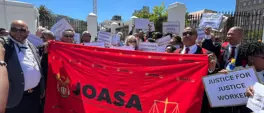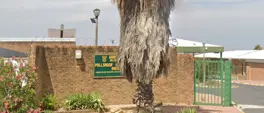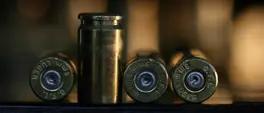Cradock Four: Fort Calata’s wife recalls dream prompting her to visit place where his body was found
Kgomotso Modise
5 June 2025 | 5:41She relayed the story during an in loco inspection as part of an inquest into the deaths of the activists.

Nyaniso Goniwe, Lukhanyo Calata, Lonwabo Mkonto and Ntsika Mhlauli, the sons of the Cradock four at the Garden of Remembrance, a memorial site for their fathers. Picture: Kayleen Morgan/EWN.
GQEBERHA - The wife of Fort Calata, one of the Cradock Four activists, has recalled how she was haunted by a dream after his murder, prompting her to visit the place where his body was found.
She relayed the story during an in loco inspection as part of an inquest into the deaths of the activists.
ALSO READ:
- 'Cradock Four' families provide different accounts of where slain activists' bodies were found
- 'Cradock Four' inquiry heads to Port Elizabeth as part of its on-site inspection
- Court shown locations where apartheid special branch police allegedly surveilled Cradock Four
The court has been visiting significant locations linked to the lives and the assassinations of Calata, Matthew Goniwe, Sicelo Mhlauli, and Sparrow Mkhonto.
The four were abducted by apartheid special branch police in June 1985 while they were travelling from what was then Port Elizabeth to Cradock.
Their burned bodies were later found scattered around the city.
Judge Thami Beshe has spent her time presiding over the Cradock Four inquest not in a courtroom, but in an open veld, near dunes and on the beach.
Standing on a pavement metres away from the Bluewater Bay beach, Calata’s wife, Nomonde, recalled coming here to perform a ritual to repatriate his spirit, 30 years after his passing.
"I had a dream that was haunting me. Fort was telling me that he wants to come home. Eventually, I found Mbulelo and he said he is going to consult and then he said we must go to collect the spirit."
But this location has been disputed by Mhlauli’s brother-in-law, Gcobani Zonke, who claims he found Calata and Goniwe’s charred bodies on another side of town.
Zonke claims it was the apartheid government that moved the bodies of the Cradock Four and scattered them across the city.
Get the whole picture 💡
Take a look at the topic timeline for all related articles.
Trending News
More in Local

29 October 2025 16:22
Deputy ministers under scrutiny after Deputy Police Minister Mathale admits not having delegated duties

29 October 2025 15:45
Magistrates demand action from President, salaries commission over 17-year salary stagnation

29 October 2025 15:14
POPCRU worried about safety of Correctional Services officials












